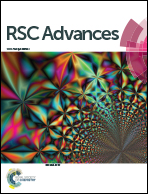New insight into the flocculation behavior of hydrophilic silica in styrene butadiene rubber composites
Abstract
The flocculation behavior of hydrophilic silica in styrene butadiene rubber composites has been carefully analyzed by rheology methodology. An evident increment of the elastic modulus (G′) can be observed over a critical temperature for unmodified composites due to a significant filler network composed of loose silica clusters, while the increment of G′ for modified composites is slight. Still, the flocculation behavior is confirmed by nonlinear dynamical strain sweeps and Atomic Force Microscopy (AFM). Thereafter, modified and unmodified silica filled composites, with varied processing temperature, are vulcanized respectively, and corresponding fatigue crack growth tests are implemented. A modified composite with a processing temperature of 130 °C possesses the smallest exponent law, b, and dc/dn at a given tearing energy (T). We deduce that fatigue crack growth changes from a local stress concentration mechanism originating from severe silica flocculation within unmodified composites to a crack deflection growth mechanism originating from moderate silica flocculation within modified composites. Based on the crack tip morphology investigations at T = 5, 10, 15, 20 kJ m−2, it can be proposed that the crack tip morphology has a tear energy dependence, closely related to the flocculation behavior of silica.


 Please wait while we load your content...
Please wait while we load your content...